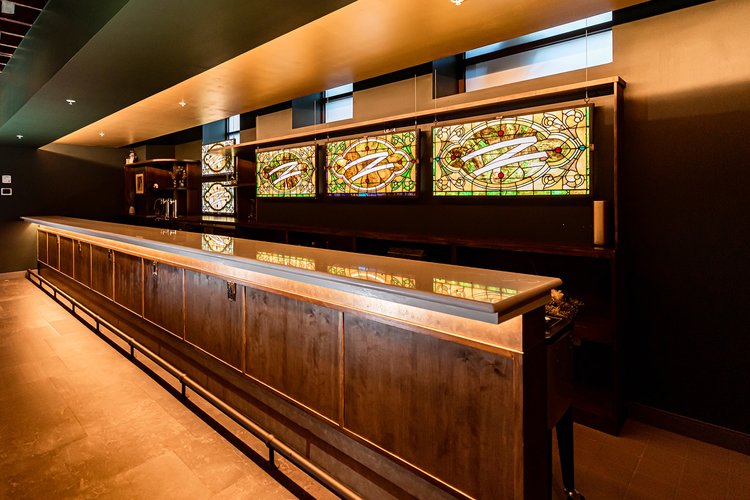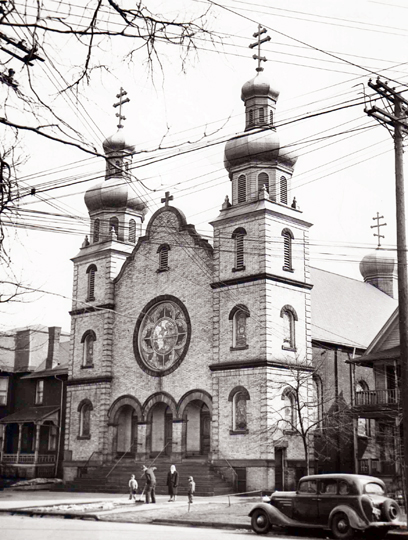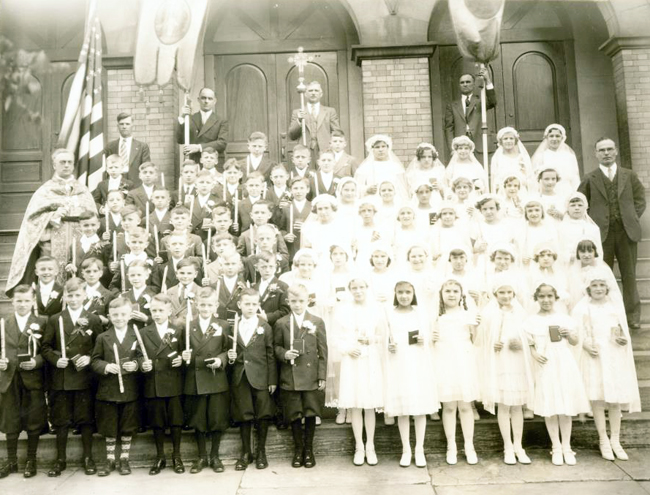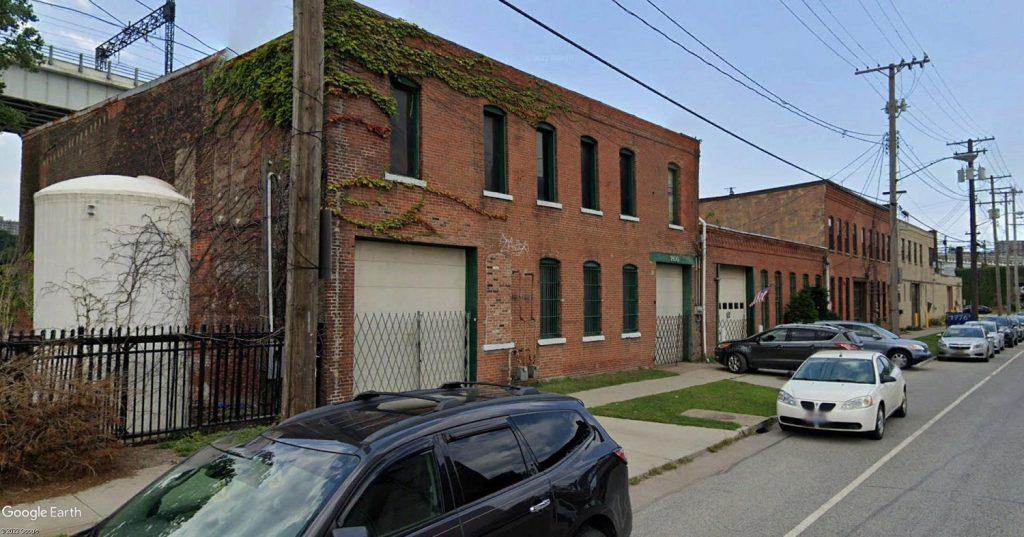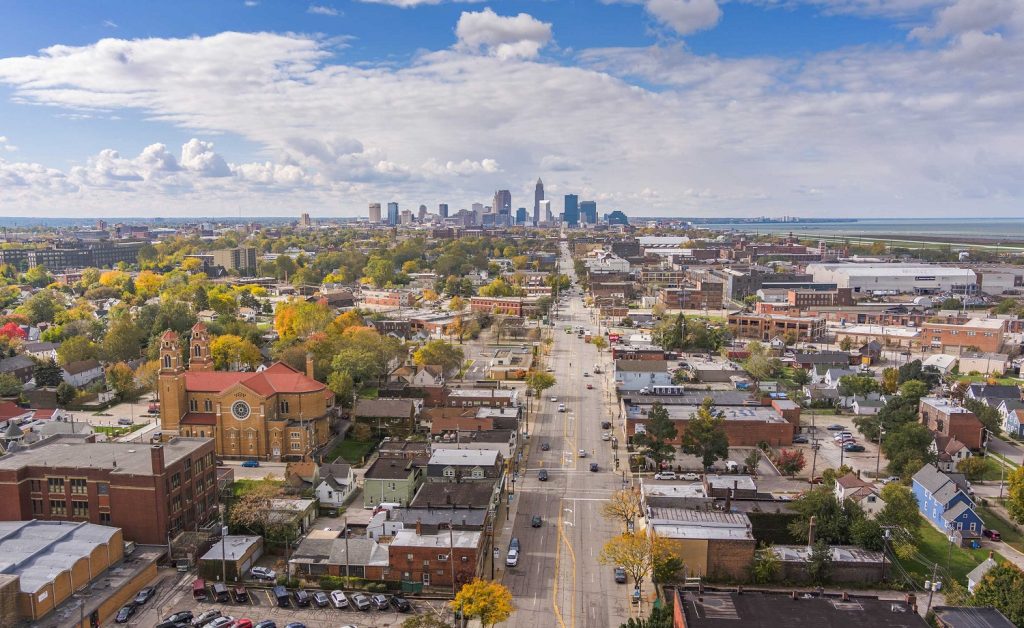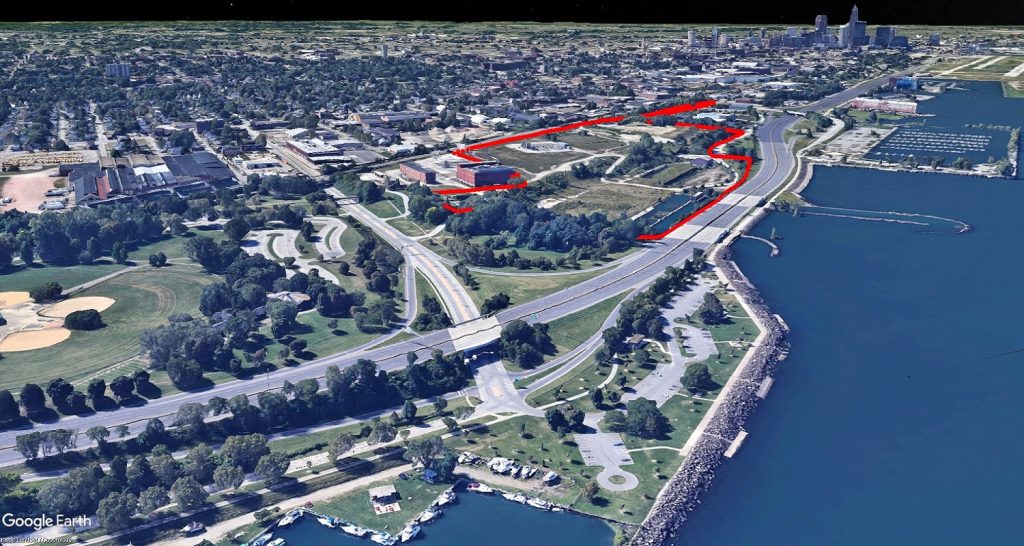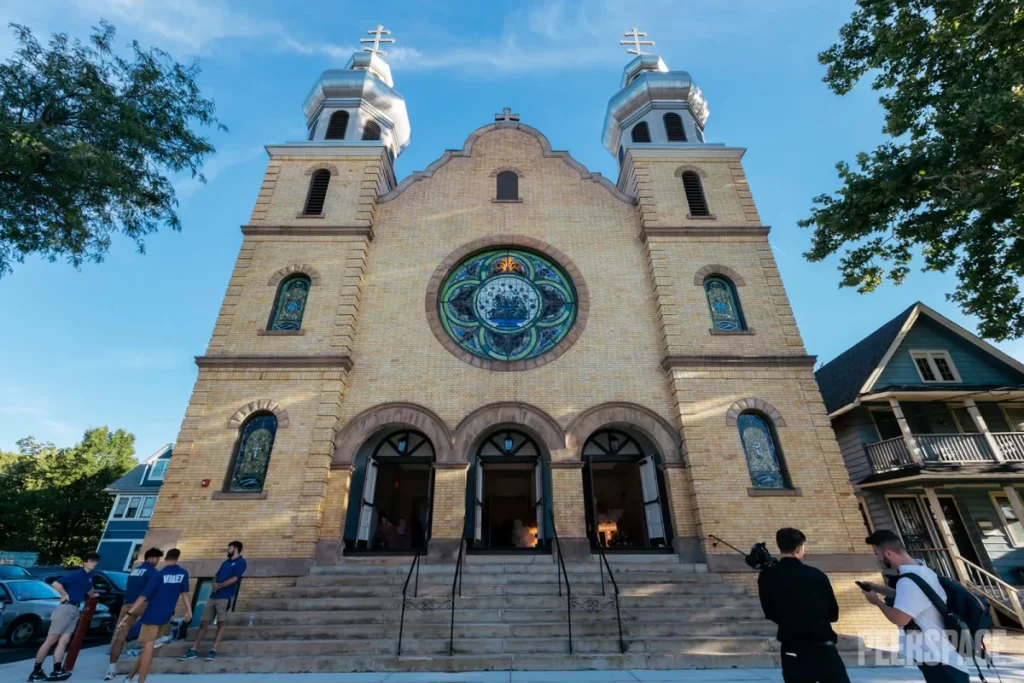
The Elliot and its Rosehip Room speakeasy are an updated place. The event center opened in Fall 2022 in the former Holy Ghost Church, 1415 Kenilworth Ave., in Cleveland’s Tremont neighborhood. Its speakeasy began offering live performances but the rest of the church is available for rent for celebrations and private events (Peerspace). CLICK IMAGES TO ENLARGE THEM
Ex-church now offers speakeasy, live music
The Elliot, Tremont’s newest events venue which opened in Fall 2022 in Tremont’s former Holy Ghost Church, has launched its Rosehip Room speakeasy with a spring lineup of performing acts. They will perform in the Rosehip Room, a speakeasy designed to accommodate live music, trivia nights and private events at 1415 Kenilworth Ave. in Cleveland. The Rosehip Room’s launch was celebrated with a party Feb. 24.
Their spring lineup, which runs through April, actually began Feb. 17, with Sadhu and Fred Reeves. It continues with Cleveland-based performers including Rye Valley Trio, Kristine Jackson, and Meganne Stepka. The Rosehip Room will be open only for scheduled events and doors will open one hour prior to the show. The Rosehip Room is equipped with a 27-foot bar, stage and full audio-visual setup including speakers, amplifiers, a mixing board, microphones, a projector and a 150-inch screen, perfect for live music and watch parties. There is a cashless bar with non-alcoholic options.
Formerly home to the Holy Ghost Church in Cleveland’s Tremont neighborhood, The Elliot was renovated to provide modern features while honoring its historic architecture, making private events a unique and memorable experience. At 10,000-plus square feet, The Elliot is equipped to host weddings, corporate events, private parties, galas and any other reason someone might have to celebrate.
The historic architecture of Cleveland is an integral part of the city. Despite rapid redevelopment and population growth of Tremont, the preservation of great buildings remains a priority. The Elliot has opened its doors as a sophisticated event venue. About 400 guests will be able to take part in any event. Each city is woven from historical architectural works.
The fact that, no matter what, the Byzantine Catholic Church of the Holy Spirit has not perished under the prospect of urbanization and demolition is undoubtedly important for Cleveland. In 2020, the church was put up for sale. Its location and architectural value immediately attracted the attention of Stephanie Ridgeley. She decided to buy the building and give it a second life as The Elliot.
“The Elliot will be a successful event venue due to its character, facilities and location,” says Stephanie Ridgley, who has 16 years of event planning experience. “My goal for The Elliot is to be the premier venue for weddings, private events, corporate pirate/conferences, community gatherings, whatever.”
In Cleveland at that time there were only two churches that served the Ruthenian community. And they were far away. It was only thanks to Burik that permission was obtained to build a new church on the West Side of Cleveland. The church first opened its doors to parishioners in 1910. Then, on the eve of world wars and catastrophes, the church became a haven for fugitive Ruthenian from all over the world.
The Byzantine Catholic Church of the Holy Spirit served congregations of Ruthenian Catholics originating from the region in western Ukraine. The infringement of the Catholic community of Ruthenians was unbearable, which became the basis for the flight of many parishioners. At that time, the church received about 1,100 parishioners and participated in weddings, funerals, and christenings.
Initially, the idea of creating a church belonged to Father Emil Burik. It was he who led the task of creating a new church in 1909. Plans were drawn by architect Marion E. Wells.
Burik himself went through an incredible path of immigration and thanks to him Cleveland acquired the Church of the Holy Spirit. He was born in 1874 in Austria-Hungary. From 1898, Burik was a pastor in Slovakian region in a small village near Presov. In 1906, Burik was forced to leave the parish in Slovakia and leave the country.
First, the pastor arrived in New York, from where he was sent to Philadelphia and then to Cleveland. Burik organized the construction of the church and the parish here. The cost at that time was about $60,000. A year before the construction of the church, parishioners gathered in the Eustis Hall on Literary Avenue. Like many other immigrants of that era, parishioners worked in Cleveland’s factories. The appearance of a temple in this part of the city was a great joy. On Feb. 6, 1910, the Most Reverend Father Stefan Yaritsky blessed the Church of the Holy Spirit.
The Spanish Flu epidemic caused a lot of pain for the citizens of Cleveland. Byzantine Catholic Church in 1918 became a haven and shelter during the epidemic for many families and children. Saved not only spiritually, the residents warmly thanked the church and its servants. At the end of the 1950s, the number of parishioners increased to 3,000 people. Believers with great love and attention to the temple found support and spiritual shelter here.
An incredible work of art for the church are three crosses, handmade in Budapest, Hungary in 1924. Tragically, in 1969, one of the towers of the temple collapsed due to a storm. Then the second one had to be demolished. Funds from the staff were scarce enough to restore the premises. However, 10 years later, parishioners raised funds and helped transform the church.
Nov. 1, 2009 was the last service at the Byzantine Catholic Church of the Holy Spirit. Only nine families of parishioners attended services and the church was forced to permanently cease to exist. However, thanks to caring citizens, today this building with an incredible history continues its life as The Elliot.
Holy Ghost Byzantine Catholic Church was not only a building — it became an integral part of Cleveland’s history. This is the place where hundreds of parishioners saved their lives. Many found support, help, spiritual strength here. Due to Holy Ghost Byzantine Catholic Church during the epidemic, dozens of children survived. More than a century ago, Burik caused the creation of this architectural beauty. Years later, we have the incredible opportunity to visit and enjoy this space.
Today our world is changing, and our main goal is not to lose a part of our history and preserve its most important imprints. The Elliot is a second life for the Holy Ghost Church in Tremont. Now here again we can see the happy faces of the people and hear the music. After all, this is precisely the meaning of this incredible building – to give people happiness.
END


